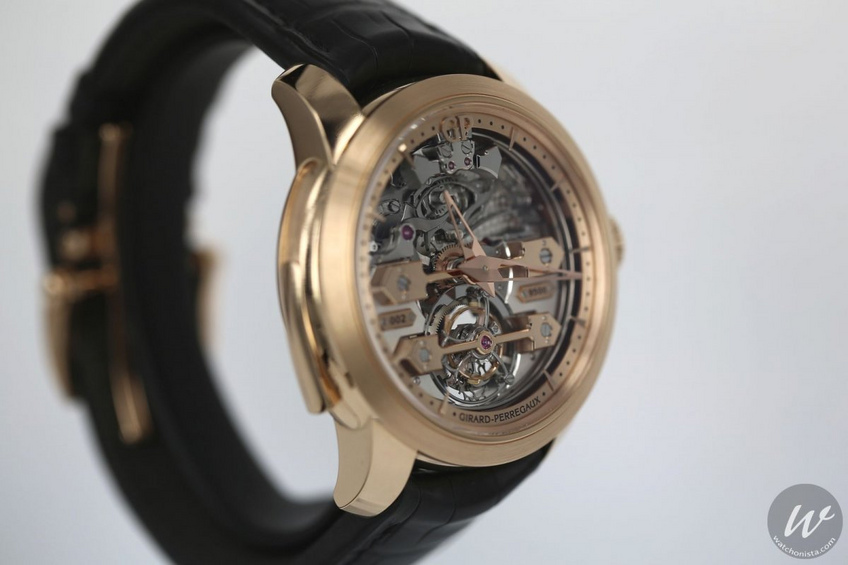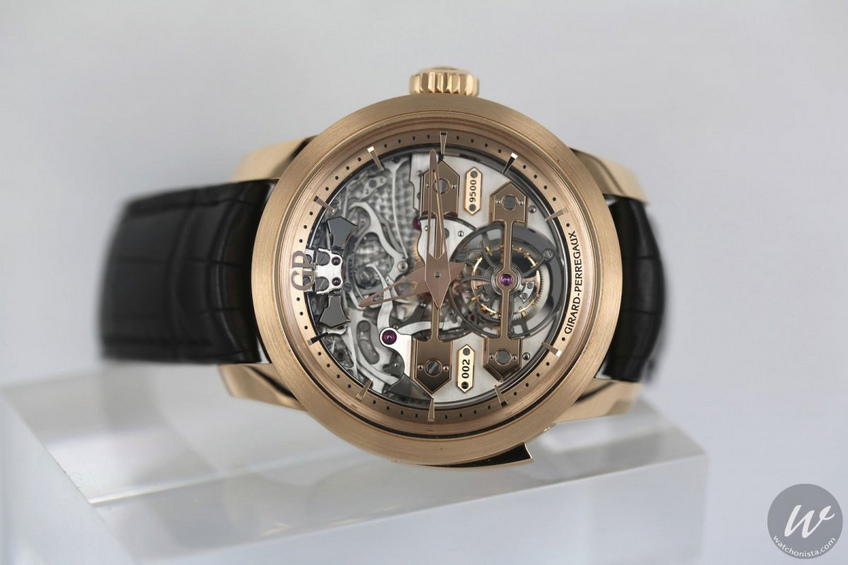

Girard-Perregaux fashions its own Minute Repeater Tourbillon
Girard-Perregaux has revisited the famous aesthetics of the three gold bridges in the greatest watch complication – all for a good cause.
Girard-Perregaux celebrated its bicentenary in the early 1990s by pulling a special configuration from its treasure archives. It was easily recognizable given that its three gold bridges overhung a tourbillon caliber on the front side of the watch. Its shape, which not only made the brand’s pocket watches famous but also embodies the functionality’s aesthetics up to our days, was patented in 1884. Since then, the brand has never stopped reinterpreting this defining feature. Girard-Perregaux owes its resurrection as well as its museum – set to be reopened in 2015 – to the late Luigi “Gino” Macaluso (1948-2010), a former motor racing driver who became an architect and then an entrepreneur. Indeed, its arrow-shaped bridges have almost become a trademark.

Two and three gold bridges: Girard-Perregaux goes it alone
2015 has marked an important turning point for the brand. The new Girard-Perregaux Minute Repeater Tourbillon that was introduced at BaselWorld features only two bridges on its dial. Indeed, the third one has been moved to the back of the dial and can now only be seen through a sapphire glass that is attached to the case using six screws.

But it would be over-simplistic to limit ourselves to describing the bridges of this musical mechanical wonder. Once more, the La Chaux-de-Fonds-based manufacture has been true to its creative aura. In order to produce perfect sound, the elements of the striking mechanism (i.e. the rigid threads used as the gongs on which two articulated hammers strike) have been moved to the dial and housed in a 45-mm round-shaped, domed pink gold case. Needless to say, aficionados who can afford such realization will want to be able to both see it and show it, especially whilst the mechanism is in action. Indeed, the unconventional layout of the piece enhances the beholder’s ability to appreciate and hear such a spectacle.

Ruby-set hammers for clear and powerful sound
This horological complication that chimed the hour just like old living room clocks or church bells but in the exceptionally small space a wristwatch offered, appeared in the late 17th century. Since then, generations of watchmakers have used it to span their creativity. This has particularly been true in recent years when prestigious brands have included it in their collections to convey their perfect mastery of complicated watchmaking, which at the same time redounds in the public’s perception of their other creations.

Despite the hundreds of solutions available, Girard-Perregaux chose an innovating and exclusive configuration. The harmonious appearance of this layout is the result of no less than 270 hours of patience and seasoned dexterity that were required to set and regulate the 406 components of this mechanical device. These include the unusual rubies on which the hammers move, like on a ball-bearing.

One of the most difficult stages of the assembling process was the regulation of the ruby-set hammers – as found in ball-bearings. The hammers were placed outside the movement on the same surface as the racks that equip them before they strike and with a special tool that shows where they will move to when they strike.
These compact hammers were inspired by the design of the gold bridges and are moved by small components made in polished and chamfered black hardened steel. Hence their inertial force, power and sound clarity increase.






